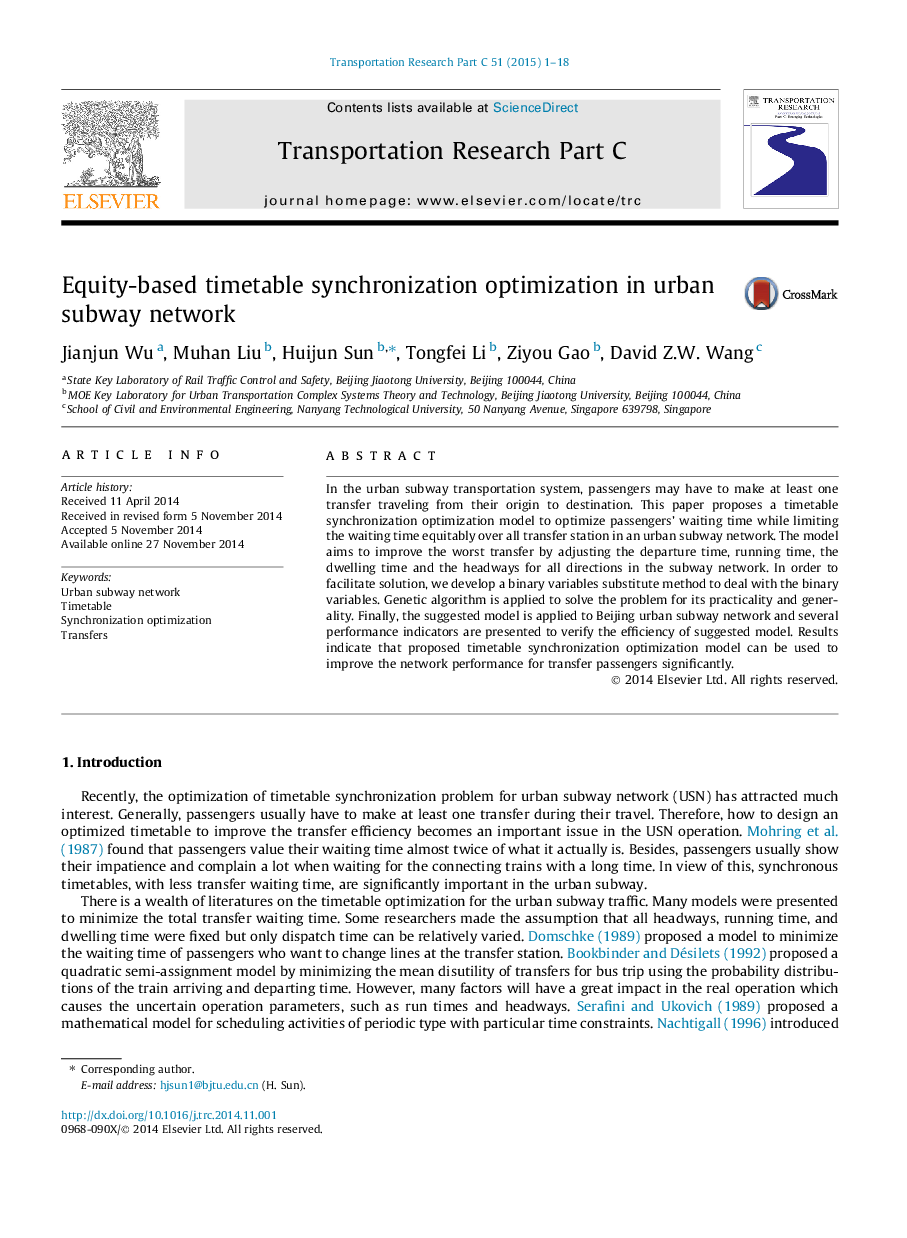| Article ID | Journal | Published Year | Pages | File Type |
|---|---|---|---|---|
| 524986 | Transportation Research Part C: Emerging Technologies | 2015 | 18 Pages |
•Timetable synchronization optimization model is proposed to optimize waiting time.•By adjusting the operating parameters, the worst transfer can be optimized.•A binary variables substitute (BVS) method is used to deal with the binary variables.•Several performance indicators are presented to verify the efficiency of the model.
In the urban subway transportation system, passengers may have to make at least one transfer traveling from their origin to destination. This paper proposes a timetable synchronization optimization model to optimize passengers’ waiting time while limiting the waiting time equitably over all transfer station in an urban subway network. The model aims to improve the worst transfer by adjusting the departure time, running time, the dwelling time and the headways for all directions in the subway network. In order to facilitate solution, we develop a binary variables substitute method to deal with the binary variables. Genetic algorithm is applied to solve the problem for its practicality and generality. Finally, the suggested model is applied to Beijing urban subway network and several performance indicators are presented to verify the efficiency of suggested model. Results indicate that proposed timetable synchronization optimization model can be used to improve the network performance for transfer passengers significantly.
